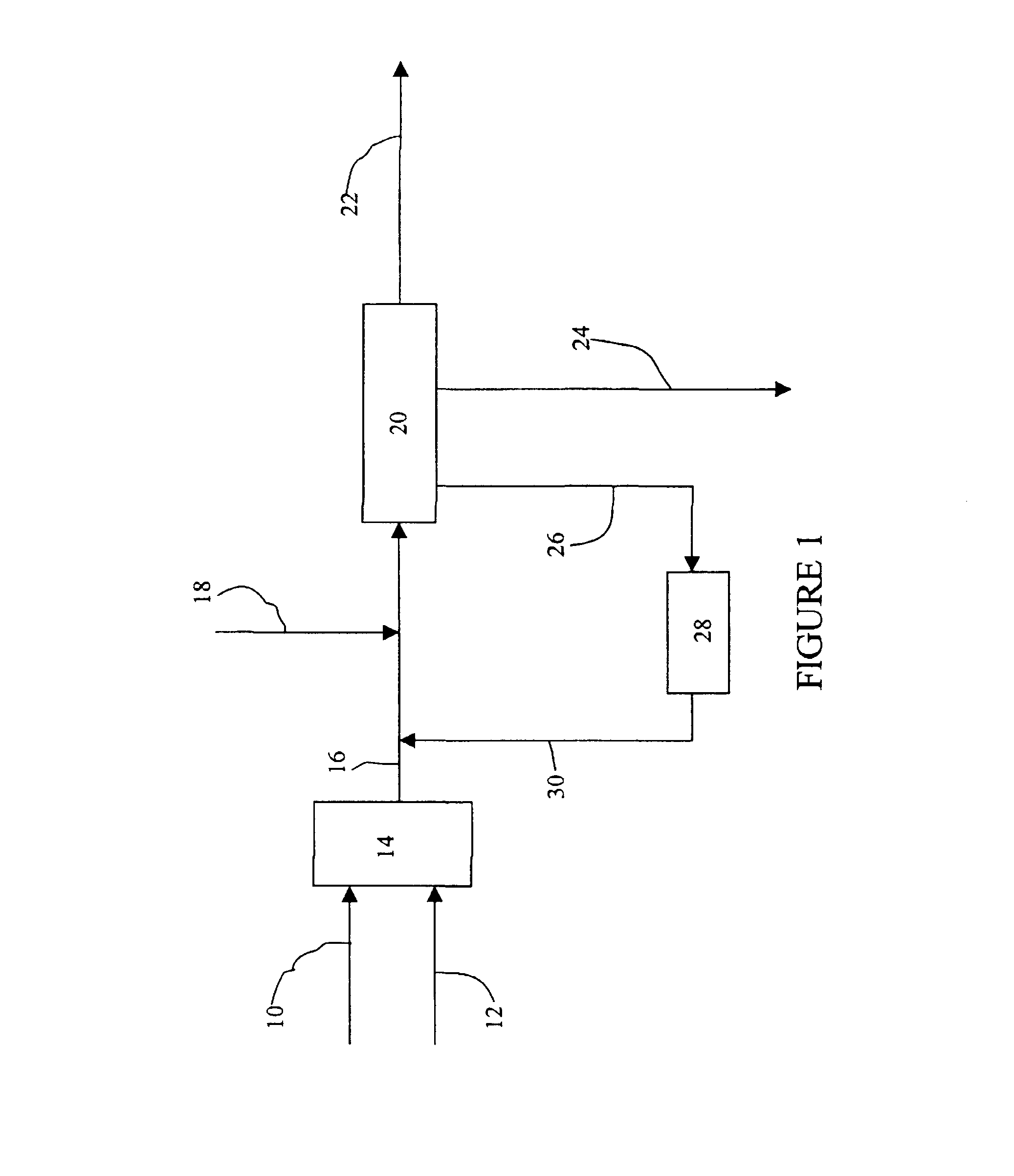System and method for purifying cumene hydroperoxide cleavage products
a technology of cumene hydroperoxide and purification method, which is applied in the direction of oxygen compound purification/separation, carbonyl compound preparation, pressurized chemical process, etc., can solve the problems of reducing and affecting the quality of phenol products for many end use applications
- Summary
- Abstract
- Description
- Claims
- Application Information
AI Technical Summary
Benefits of technology
Problems solved by technology
Method used
Image
Examples
example 2
A second trial was conducted utilizing the same raw materials and conditions used in Example 1, except that the heat treatment vessel 28 was operated at the following parameters: 200.degree. C., 240 psi, and 1 hour residence time. The hydroxyacetone content in the heat-treated aqueous salt phase stream 30 was measured at 452 ppm, representing a hydroxyacetone conversion of 59%. Following recirculation of the heat-treated aqueous salt phase stream 30, and re-equilibration within neutralizer reactor 20, the hydroxyacetone concentration of neutralized cleavage product stream 22 was measured at 610 ppm, representing a hydroxyacetone conversion of 51.2%.
example 3
A second trial was conducted utilizing the same raw materials and conditions used in Example 2, except that a 10 wt. % aqueous sodium sulfate solution was utilized. The hydroxyacetone concentration of the heat-treated aqueous salt phase stream 30, and neutralized cleavage product stream 22 (following recirculation) was measured at 495 ppm and 680 ppm, respectively.
example 4
A third trial based upon Example 2 was conducted utilizing the same raw materials and conditions of Example 2, except that a 25 wt. % aqueous sodium sulfate solution was utilized. A qualitative analysis of heat-treated aqueous salt phase stream 30 and neutralized cleavage product stream 22 (following recirculation) indicated a hydroxyacetone concentration of 430 ppm and 588 ppm, respectively.
PUM
| Property | Measurement | Unit |
|---|---|---|
| weight percent | aaaaa | aaaaa |
| weight percent | aaaaa | aaaaa |
| pressure | aaaaa | aaaaa |
Abstract
Description
Claims
Application Information
 Login to View More
Login to View More - R&D
- Intellectual Property
- Life Sciences
- Materials
- Tech Scout
- Unparalleled Data Quality
- Higher Quality Content
- 60% Fewer Hallucinations
Browse by: Latest US Patents, China's latest patents, Technical Efficacy Thesaurus, Application Domain, Technology Topic, Popular Technical Reports.
© 2025 PatSnap. All rights reserved.Legal|Privacy policy|Modern Slavery Act Transparency Statement|Sitemap|About US| Contact US: help@patsnap.com

